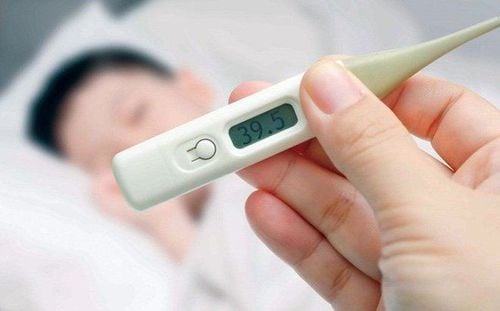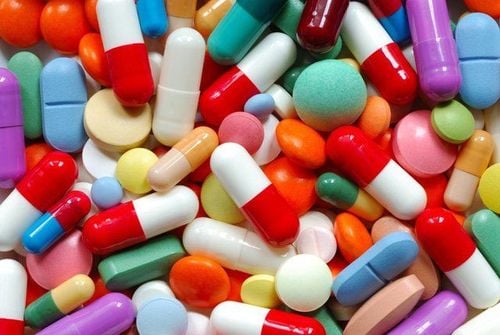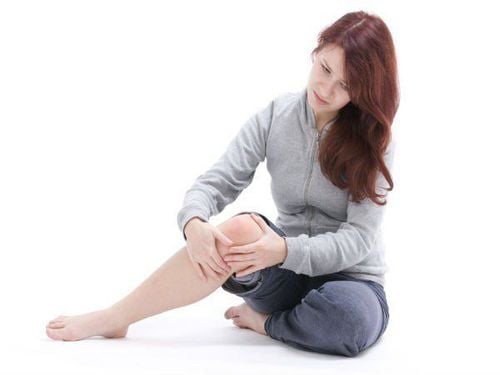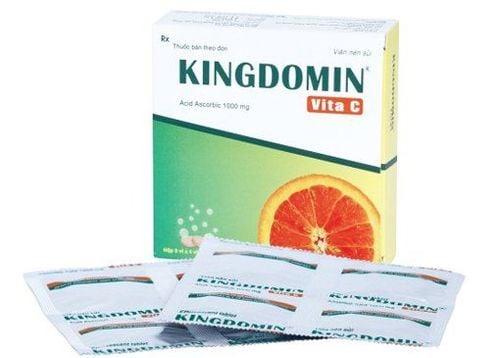This is an automatically translated article.
The article was professionally consulted with Master, Doctor Nguyen Tung Hoanh- Department of Resuscitation - Emergency - Vinmec Nha Trang International General Hospital.Febrile convulsion syndrome is a common syndrome in breastfed children (under 2 years old), manifested by convulsions or tonic-clonic seizures when the child has a high fever. This is a medical condition that requires emergency treatment because it can threaten a child's life or leave serious sequelae such as epilepsy, mental and motor retardation, especially cases of prolonged high fever convulsions.
1. What is a febrile seizure?
1.1.What is a febrile convulsion? Febrile convulsion is a convulsion condition that occurs in children between the ages of 3 months and 6 years and has a febrile temperature of 38°C or higher. Most febrile seizures occur in children between the ages of 12 and 18 months.Children with febrile convulsions will have symptoms of fever, sudden increase in temperature, stiff body, eyes widening, hands and feet jerking continuously and after 1-2 minutes, the convulsions will stop by themselves.
Currently, there is still a lot of information that the child has a high fever, if the temperature is not lowered, the child will have a convulsion. This is unfounded because not all febrile children have seizures and a high fever does not necessarily cause a febrile seizure in a child. In children with a predisposition to febrile convulsions, a high fever may cause convulsions, but even if that child (with a predisposition to febrile convulsions) has a fever of only 38°C, he may have a convulsion. , while some children have a fever up to more than 40°C and still do not have convulsions (children do not have a predisposition to febrile convulsions). And it is estimated that 2 - 4% of children under 5 years of age have febrile seizures, which also means that 96-98% of children with fever will not have a convulsion.
1.2.Causes of febrile convulsions Causes of febrile convulsions in children are many, including infections: Viral infections, bacterial infections or post-vaccination conditions can also cause children to get sick. febrile convulsion. For example, the measles - mumps - rubella vaccine, after about 1-2 weeks, the child may have a fever and convulsions.
In addition, febrile seizures in children often have family history factors. Maybe there is a family history of people who had such febrile seizures when they were young like father, mother, brother, sister...

Co giật do sốt cao là gì?
2. Why can a high fever cause convulsions?
Febrile convulsions occur only in very young children (ages 6 months to 6 years) because their brains are not fully developed and are very sensitive to temperature disturbances. A high fever can stimulate a child's brain and trigger a seizure. Of course, not all children experience seizures when they have a high fever, which may be because the brains of some children are more sensitive to seizures than others, a tendency that often runs in families. By the age of 5-6, the brain has matured and the child is no longer at risk of having a febrile seizure.The use of antipyretics is necessary because it helps to avoid the risk of convulsions caused by high fever. Convulsions due to high fever is a common complication, when a child has a seizure, it will cause loss of consciousness, lack of oxygen in the brain, if the seizure lasts for a long time, it can cause long-term complications, especially for children with underlying epilepsy. . However, febrile convulsions in children are usually benign, leaving little sequelae. Therefore, after giving children fever-reducing drugs, parents need to monitor the body's response to the drug, if the child cannot cool down, they need to quickly take them to an emergency medical facility, examine and find the cause. resources for prompt treatment.
3. What to do when your child has a febrile seizure?
3.1.Handling when a child has a fever When seeing a child showing signs of fever, parents should:Let the child lie in a well-ventilated place, without drafts, do not cover too many blankets and limit too many people around. . The child's temperature should be monitored regularly. Only wear cool, sweat-wicking clothes. Use warm towels to apply all over the armpits, groin, back, ... wipe until the child's body temperature drops. Give the child paracetamol fever reducer when the temperature is 38.5 degrees Celsius or higher. If the child has a history of febrile convulsions, the medicine should be taken as soon as the temperature is 37.7 degrees Celsius. Encourage your child to drink plenty of water, and feed him more if he's not weaned. At the same time, replace electrolytes with Oresol according to instructions. 3.2.First aid when a child has a seizure When seeing a child having a seizure, parents should stay calm and follow some guidelines to reduce the risk and accident for the child:
Remove all hard objects , sharp around to avoid hurting children. Absolutely do not move the child unless it is a dangerous place such as the edge of the table, under the bed, stairs, ... Loosen buttons, remove the belt (if any) to help the child comfortable, easier to breathe. Do not put your hands, or any hard object into the child's mouth, do not grip, hold the child because this can cause injury to the child. Place the child to one side to allow phlegm and vomit to flow out to avoid choking and breathing difficulties. After the seizure, you should check the airway and the ability to reflect, listen, speak, ... to make sure the child is awake and should talk, mentally reassure the child to be less afraid. 3.3.Caring for children after a high fever convulsion Parents need to pay attention, after each high fever convulsion, the child will be very tired, so:
Take time for the child to get enough sleep, relax mentally. Supplement nutrition with easily digested, liquid foods such as porridge, fish soup, chicken, beef, birds, seafood... Encourage children to eat a lot of green vegetables, fresh fruits, if they don't like to eat , you can grind vegetables cooked with porridge and squeeze juice for children to drink.
4. Prevention of recurrent high fever convulsions

Nếu đánh giá trẻ có nguy cơ cao tiến triển thành di chứng động kinh, bác sĩ có thể sẽ chỉ định một số loại thuốc chống co giật, thuốc an thần
Recurrent high fever convulsions can seriously affect health and cause many dangerous complications for children. Therefore, parents need to know how to reduce fever, give first aid when a child has a convulsion as well as take care of the child after a seizure to help their child recover early and prevent any possible risks.
Pediatrics department at Vinmec International General Hospital is the address for receiving and examining diseases that infants and young children are susceptible to: viral fever, bacterial fever, otitis media, pneumonia in children, .... With modern equipment, sterile space, minimizing the impact as well as the risk of disease spread. Along with that is the dedication from the doctors with professional experience with pediatric patients, making the examination no longer a concern of the parents.
Please dial HOTLINE for more information or register for an appointment HERE. Download MyVinmec app to make appointments faster and to manage your bookings easily.













